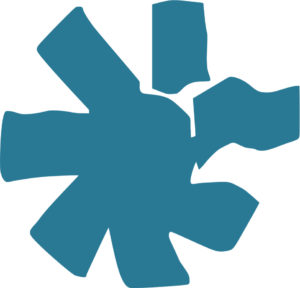Abstract: Low back pain and kidney mobility: local osteopathic fascial manipulation decreases pain perception and improves renal mobility (DOI: 10.1016/j.jbmt.2012.02.001)
Low back pain and kidney mobility: local osteopathic fascial manipulation decreases pain perception and improves renal mobility
Summary
Objectives
a) To calculate and compare a Kidney Mobility Score (KMS) in asymptomatic and Low Back Pain (LBP) individuals through real-time Ultrasound (US) investigation. b) To assess the effect of Osteopathic Fascial Manipulation (OFM), consisting of Still Technique (ST) and Fascial Unwinding (FU), on renal mobility in people with non-specific LBP. c) To evaluate ‘if’ and ‘to what degree’ pain perception may vary in patients with LBP, after OFM is applied.
Methods
101 asymptomatic people (F 30; M 71; mean age 38.9 ± 8) were evaluated by abdominal US screening. The distance between the superior renal pole of the right kidney and the ipsilateral diaphragmatic pillar was calculated in both maximal expiration (RdE) and maximal inspiration (RdI). The mean of the RdE–RdI ratios provided a Kidney Mobility Score (KMS) in the cohort of asymptomatic people. The same procedure was applied to 140 participants (F 66; M 74; mean age 39.3 ± 8) complaining of non-specific LBP: 109 of whom were randomly assigned to the Experimental group and 31 to the Control group. For both groups, a difference of RdE and RdI values was calculated (RD = RdE–RdI), before (RD-T0) and after (RD-T1) treatment was delivered, to assess the effective range of right kidney mobility.
Evaluation
A blind assessment of each patient was carried using US screening. Both groups completed a Short-Form McGill Pain Assessment Questionnaire (SF-MPQ) on the day of recruitment (SF-MPQ T0) as well as on the third day following treatment (SF-MPQ T1). An Osteopathic assessment of the thoraco-lumbo-pelvic region to all the Experimental participants was performed, in order to identify specific areas of major myofascial tension.
Intervention
Each individual of the Experimental group received OFM by the same Osteopath who had previously assessed them. A sham-treatment was applied to the Control group for the equivalent amount of time.
Results
a) The factorial ANOVA test showed a significant difference (p-value < 0.05) between KMS in asymptomatic individuals (1.92 mm, Std. Dev. 1.14) compared with the findings in patients with LBP (1.52 mm, Std. Dev. 0.79). b) The ANOVA test at repeated measures showed a significant difference (p-value < 0.0001) between pre- to post-RD values of the Experimental group compared with those found in the Control. c) A significant difference (p-value < 0.0001) between pre- to post-SF-MPQ results was found in the Experimental cohort compared with those obtained in the Control.
Conclusions
People with non-specific LBP present with a reduced range of kidney mobility compared to the findings in asymptomatic individuals. Osteopathic manipulation is shown to be an effective manual approach towards improvement of kidney mobility and reduction of pain perception over the short-term, in individuals with non-specific LBP.
Keywords: Low back pain, Kidney, Renal movement/mobility, Respiration, Fascia/Renal fascia, Myofascial, Ultrasound, Osteopathy, Somatic dysfunction, Osteopathic manipulation, Fascial techniques/Manipulation, Fascial/Osteopathic treatment, Still technique, Fascial unwinding

